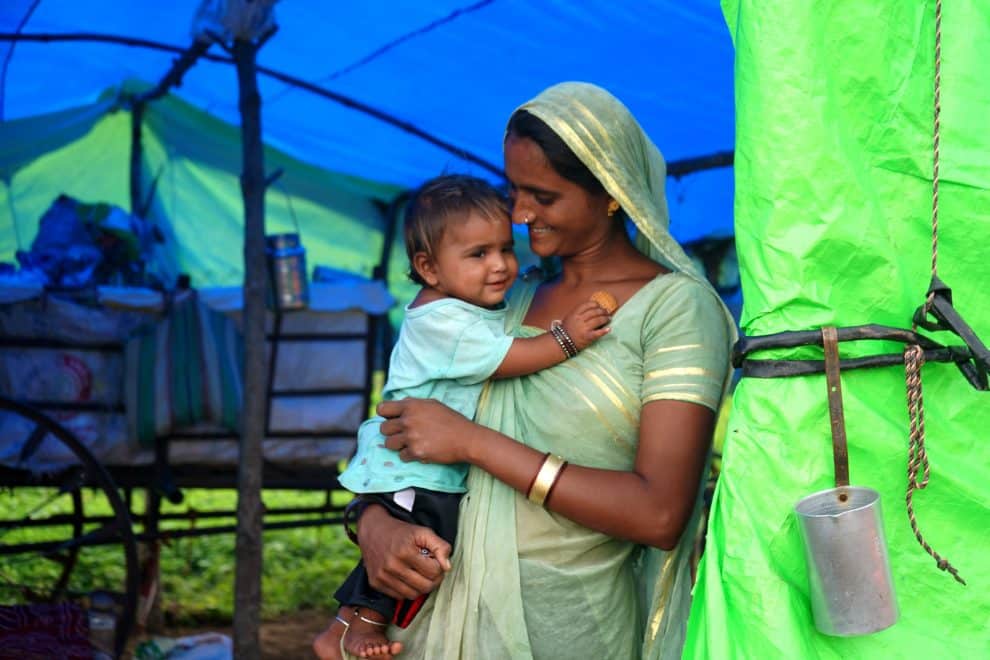Malnutrition is still the underlying risk factor for 68 percent of the deaths among children below the age of 5.
Malnutrition deaths among under-five children in the country have dropped by two-thirds between 1990 and 2017, but it still remains the underlying risk factor for 68 per cent of child deaths, according to a study published in The Lancet Child and Adolescent Health.
The comprehensive study by the India State-Level Disease Burden Initiative estimated the disease burden due to child and maternal malnutrition, in every Indian state from 1990 onwards. The findings show malnutrition is still the leading risk factor for disease burden in persons of all ages considered together contributing 17 per cent of the total DALYs (disability-adjusted life years).
The DALY rate attributable to malnutrition in children varies seven-fold between the states and is highest in Rajasthan, Uttar Pradesh, Bihar and Assam, the study noted.
Among the malnutrition indicators, low birth weight is the largest contributor to child deaths in India, followed by child growth failure which includes stunting, underweight, and wasting, the study stated. On the release of these findings, Prof. Vinod K. Paul, Member NITI Aayog said that September is being observed as Poshan Maah with the aim of reaching every household with the message of nutrition. “The study findings are released at an opportune time when Government of India is intensifying its efforts to address the issue of malnutrition across the country,” he said.
This is a consortium of experts and stakeholders associated with over 100 Indian institutions, including the Indian Council of Medical Research (ICMR), the Public Health Foundation of India (PHFI) and Institute for Health Metrics and Evaluation, an independent global health research centre at the University of Washington.
Professor K. Srinath Reddy, President, Public Health Foundation of India said, “India’s growth story would remain incomplete if malnutrition continues to throw a dark shadow on development. If we have to protect the health of our young people and also realise the demographic dividend of a productive population, we need urgent action as alerted by this report.”
While the four worst-performing states have DALYs of more than 60,000, Madhya Pradesh (MP), Chhattisgarh, Odisha, Nagaland and Tripura too figure among the second set of poor-performing states that have DALYs between 50,000 and 59,999, the Lancet study said.
“The findings reported in the paper highlight that there are wide variations in the malnutrition status between the States. It is important therefore to plan the reduction in malnutrition in a manner that is suitable for the trends and context of each State,” said Balram Bhargava, ICMR Director-General.
The prevalence of child underweight was 33 per cent in India in 2017, ranging from 16 per cent in Manipur to 42 per cent in Jharkhand. Its annual rate of reduction was 3.2 per cent between 1990 and 2017.
According to the study, the prevalence of child anaemia was 60 per cent in India in 2017, ranging from 21 per cent in Mizoram to 74 per cent in Haryana.
“The study reveals that while it is important to address the gaps in all malnutrition indicators, low birth weight needs particular policy attention in India as it is the biggest contributor to child death among all malnutrition indications and its rate of decline is among the lowest. Another important revelation is that overweight among a subset of children is becoming a significant public health problem as it is increasing rapidly across all states of India,” said Prof Lalit Dandona, distinguished professor, Public Health Foundation of India and director of the India State-Level Disease Burden Initiative.
The state-specific findings described in this scientific paper highlight the extent of the effort needed in each state to achieve the national and global targets for various malnutrition indicators.

















